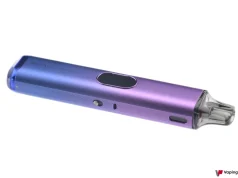Last October, Korea’s National Assembly’s finance committee had discussed the possible implementation of a tax on Heat-not-Burn (HnB) products, that would match the one imposed on regular cigarettes. This bill was passed earlier this month, and the tax raise which is expected to go into effect next month, will increase the prices of PMI’s ‘Heets’ and BAT’s ‘Neostiks’, from the current 4,300 range to about 5,000 won (US$4,415) a pack.
Japan still leading the HnB market
Japan seems to be following suit, and experts are predicting that since Big Tobacco had invested heavily in HnB products in Japan, any changes that take place here will act as a template for legislators in other countries. “Whatever happens in Japan now, you’re gonna see that probably put into people’s numbers for the wider global markets,” said Mr Owen Bennett, an analyst with Jefferies in London. “I think it’s the key data point in terms of how people view this space going forward.”
The first HnB device available on the Japanese market was Ploom Tech by Japan Tobacco, followed by PMI’s iQOS and BAT’s Glo. PMI launched its iQOS device in Japan in April 2016, and the product was immediately sold out. By March this year, PMI had already sold over 3 million of the devices, and President of Philip Morris Japan, Paul Riley, said that the company couldn’t seem to produce enough.
“But the question is what is the demand? We continue to increase the production but they get sold out as soon as they hit the stores,” said Riley at the time. British American Tobacco Plc (BAT), launched its own Heat Not Burn device Glo, in December 2016, and in order to compete with PMI it marked its device a significant 20% lower than iQOS.
HnB market could triple in size in the coming years
According to Euromonitor International estimates, although the US$5 billion global market for heat-not-burn is only a fraction of the US$680 billion market for regular cigarettes, as the market for the latter is expected to stall over the coming years, the market for HnB may even triple in size over the next four years.
Read Further : The Straits Times









